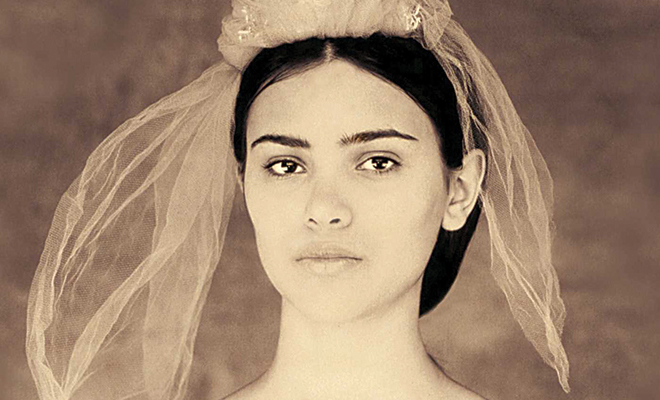
The Marriage of Opposites by Alice Hoffman
Alice Hoffman is a master of historical fiction, thoroughly researching locale and personalities, building a vivid and absorbing portrayal of her characters. In The Marriage of Opposites, she brings to life a forbidden love story with protagonists who are willing to defy society for their love.
“I always left my window open at night, despite the warnings I’d been given. I rarely did as I was told…As a child I did not sleep through the night, and I certainly didn’t follow any rules. But I was a girl who knew what I wanted.”
Thus Alice Hoffman introduces Rachel Pomié, protagonist of The Marriage of Opposites, her 2015 novel. As with The Dovekeepers, Hoffman provides a lesson in history that is constructed around Rachel, the granddaughter of Jews who fled France and religious persecution, settling in the New World on Sainte-Domingue. “But there was no peace in societies where sugarcane was king and people were enslaved.” On the Danish-ruled Caribbean island of St. Thomas, the King of Denmark had proclaimed religious freedom, outlawed slavery and given Jews the civil rights of other men. Rachel’s mother and father, Sara and Moses Pomié, a merchant, escape to St. Thomas; Moses is hidden in a wicker basket carried by his trusted clerk, Mr. Enrique.
Rachel was born in 1795 into a society constrained by the written and unwritten rules of religion, race and class. She grows into adolescence roaming the island with Jestine, the daughter of Adelle, a beautiful woman of African heritage and the family’s cook. Rachel’s relationship with her mother is stormy, and the two girls wish that they were sisters, forging a lifelong bond that weaves its threads closely throughout the events of their lives.
Rachel longs for France; her father teaches her to read English, Spanish and Hebrew, and she takes refuge in his library full of maps and books from France. But as her father’s business falters, he finds a solution in arranging a marriage for Rachel to Isaac Petit, a recently widowed merchant 30 years her senior with three young children, the youngest a girl less than a year old. As Rachel falls in love with the children, she develops an affectionate relationship with her husband, still not the passionate love that she longs for. She settles into a familial life that is interrupted by Isaac’s untimely death when she is pregnant with their fourth child.
Her husband is gone; her father dies and Rachel learns from Mr. Enrique that the business is faltering. They develop a plan to rescue the business and present it to Sara, who replies, “You don’t think the business will be entrusted to you and Enrique, do you? You could never accept the fact that you were a woman and nothing more…Your husband’s family is sending his nephew from Paris. What happens next will be his decision.”
Frédérick Pizzarro arrives in Charlotte Amalie, St. Thomas, at the age of 22, with the burden of acting as the executor of his uncle Isaac’s will and deciding the fate of the business and nearly a dozen relatives, all but three unrelated by blood. It was his responsibility to turn the business around, as it was a family enterprise owned equally by Isaac’s widow, who had no voice in business matters, and the family in France, who did. “Frédérick was tall, with dark hair and an easy gait, so handsome that women often chased after him, even on the street, much to his embarrassment…” It is the moment in which Frédérick and Rachel first meet that sets the course for their future, sparking a fiery, scandalous affair that with their persistence, despite the resistance of their community of faith, is eventually solemnized in marriage.
Jacobo Abraham Camille Pizzarro is born to Rachel and Frédérick in 1830 and grows into a child whose temperament is much like his mother’s. “From early on, I was aware that just because something was a rule, it wasn’t necessarily fair,” he rails, but also recognizes the intensity of the love between his parents, unaware of their history. Jacobo sees the world in vivid color, as if it is a puzzle, whether it is a scene, a landscape, or a person, and in drawing he says, “I felt I had come upon the core of the meaning of life, to discover and re-create beauty.”
Hoffman’s prose and descriptions burn with the intensity and heat of St. Thomas’ climate. The island’s terrain, lush foliage, folklore, sea life, food and quality of light are drawn with an artist’s brush. The reader is drawn in from the opening page; I cracked the book at 9:00 p.m. and was still reading at 3:00 a.m. Every sentence and phrase convey meaning and abound with allusion and emotion as the lives and relationships of her characters emerge, old secrets are revealed, and cultural and historical events play out.
You may also have guessed that Camille later changed the spelling of his surname to Pissarro. On my desk is a volume describing the French Impressionist movement and containing dry, uninteresting biographical facts of the painter’s life. The Marriage of Opposites is much more soul satisfying. HLM







